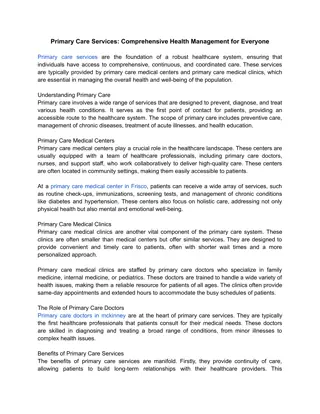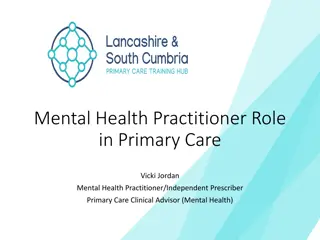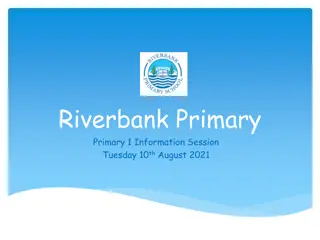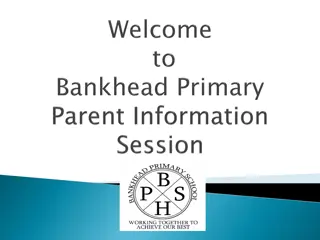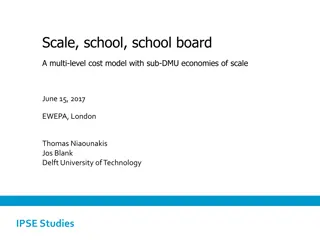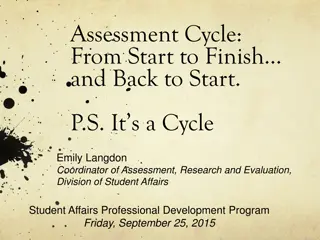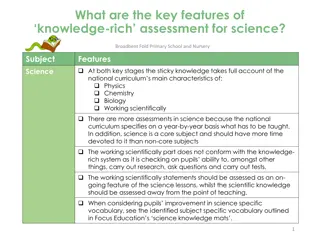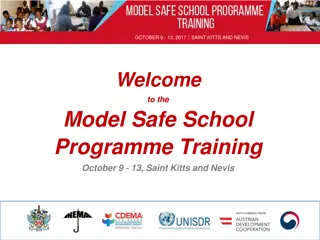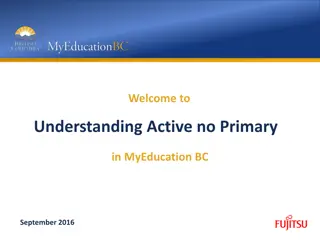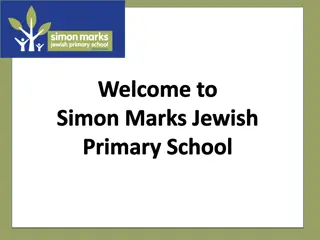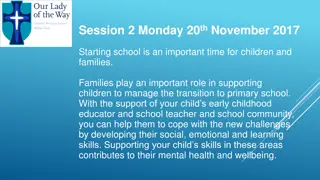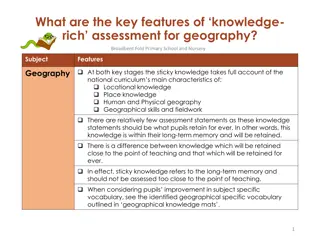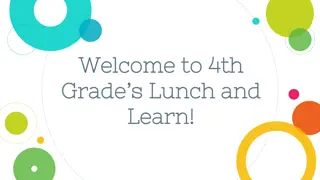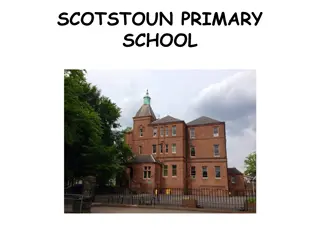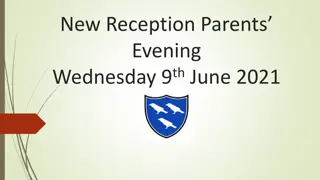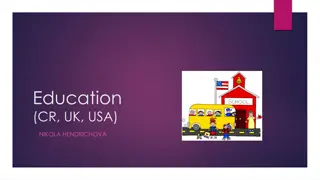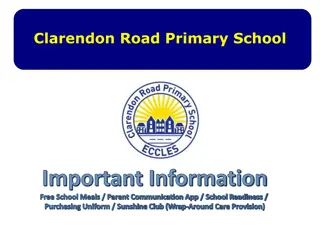Assessment Without Levels at St. John's C of E Primary School
The assessment system at St. John's C of E Primary School has transitioned from using levels to age-related standards, aligning with the New National Curriculum introduced in September 2014. The new approach involves tracking children's progress through steps such as Beginning, Within, and Secure, with an emphasis on achieving the 'Secure' level by the end of each year. Teachers and students engage in continuous assessment, feedback, and evaluation to support learning and progression within lessons. Expectations for Key Stage 1 and Key Stage 2 are defined, aiming for children to meet assessment points based on their year group. The school maintains an aspirational approach to student achievement, striving for excellence while supporting those with learning difficulties.
Download Presentation

Please find below an Image/Link to download the presentation.
The content on the website is provided AS IS for your information and personal use only. It may not be sold, licensed, or shared on other websites without obtaining consent from the author. Download presentation by click this link. If you encounter any issues during the download, it is possible that the publisher has removed the file from their server.
E N D
Presentation Transcript
Assessment Without Levels St John s C of E Primary School
New National Curriculum September 2014 Age Related Standards Levels: 1c 1b 1a 2c 2b 2a 3c 3b 3a 4c 4b 4a 5c 5b 5a 6c Age Related Standards Year 1 Year 2 Year 3 Year 4 Year 5 Year 6
So why have levels disappeared?
Age Related Standards For each year group there will be steps children will need to achieve: 1. Beginning 2. Beginning (+) 3. Within 4. Within (+) 5. Secure 6. Secure (+) By the end of the year the expectation will be that the majority of pupils will achieve Secure and a small number of pupils will exceed these steps. Children working below the National Curriculum for their year group will work towards the year group/s below.
Teachers and students will continuously assess and evaluate the learning and progress within lessons. Pupils will learn to self and peer assess and teachers will become skilled at knowing exactly what children need to learn next, how they learn and how to address gaps in learning. Teachers and pupils will give feedback on the quality of work and what they can do to move to the next step or to improve work.
Key Stage 1 The DfE expects the majority of children to reach the assessment point of Year 2 WITHIN/UPPER WITHIN. As an aspirational school St John s has an expectation that a good number of children will reach the assessment point of Year 2 ABOVE. On occasion some children will reach the assessment point of Year 2 BELOW and some Year 1 BELOW/WITHIN/ABOVE should a learning difficulty be diagnosed.
Key Stage 2 Lots of you may have heard of the expression Secondary Ready as the standard children must achieve by the end of Year 6. The DfE have slightly distanced themselves from this phrase and are talking about children reaching the assessment point of Year 6 WITHIN/UPPER WITHIN. Similar to Year 2 we have aspirations that a good number of our pupils will reach the assessment point of Year 6 ABOVE and some children will be Year 6 BELOW. There may also be a small number of children who are still working at a lower level e.g. Year 4/5 BELOW/WITHIN/ABOVE.
Assessing Without Levels The biggest difference is how we will talk to you about how your child is progressing during the year. With the old National Curriculum levels, each year children were given a target for the end of the year, and during the year we would tell you what National Curriculum level your child was at. Reports will now show where your child is working at in their year group bands
Pupil Progress Meetings As teachers continuously assess pupil progress the attainment and progress is analysed by the DHT and SEND leader. Meeting are held with the class teacher where every child is discussed individually and actions considered for moving the children forward. Progress and attainment is carefully monitored and fed back to governors and staff so that interventions where necessary are planned. Or changes to the curriculum or teaching an learning methods are discussed at Achievement team meetings.



